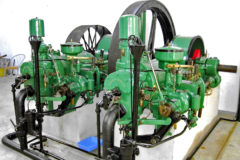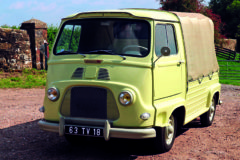A classic tractor collection
Posted by Chris Graham on 8th February 2021
Bob Weir discovers a superb classic tractor collection in Scotland, owned by enthusiast, Ross Rae.
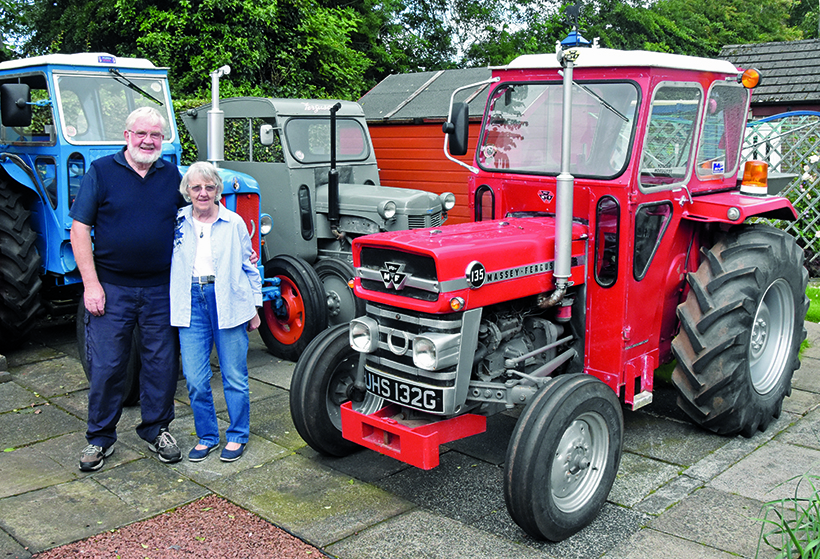
Ross and Margaret Rae with their classic tractor collection.
Ayrshire is home to some superb tractor collections and some truly knowledgeable enthusiasts. Ross Rae, from Irvine, is one such devotee, and has a fine stable of veterans.
Good days!
Ross comes from a farming background and was born and raised just down the coast at a farm near Girvan. He recalls: “My father was a dairyman and worked at several holdings over the years. Things were a lot different back then, and tractors were just starting to come into their own. I remember when they took delivery of a new Fordson petrol/paraffin E27N. These were good days, but life was hard for my father as dairymen as he had to work long hours.”
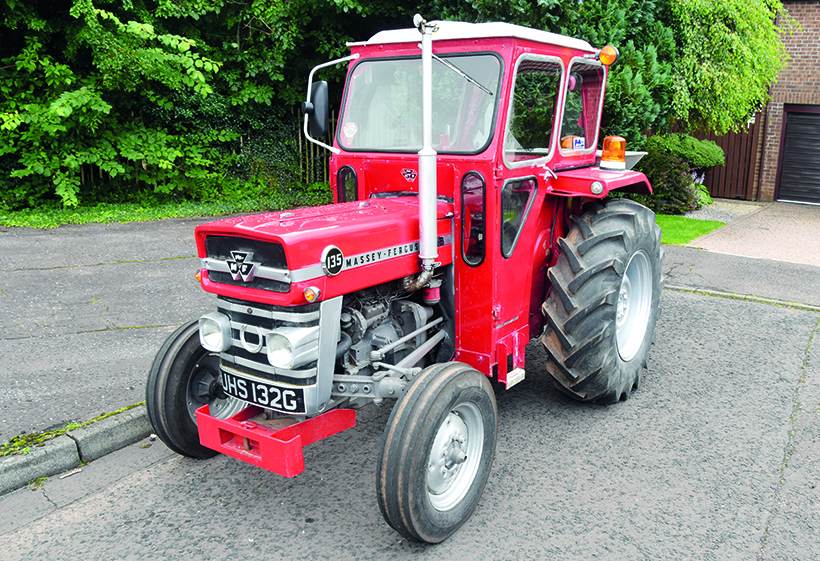
The Massey Ferguson 135 is an iconic tractor, especially when fitted with a Duncan cab.
It was a lesson not lost on Ross, who decided not to follow his father into farming. Fortunately, the E27N sparked his interest in tractors; a hobby that continues up to the present day. After leaving school, Ross joined the haulage industry as a driver’s assistant. “I loved driving lorries,” he recalls. “I had to wait until I was 21 to get a licence, but started work as a driver’s mate for a local firm called H&D Gillespie Ltd.
We lifted milk in the morning up to Glasgow, and returned with cattle feed in the afternoon. I remember we drove a Leyland Beaver and an AEC Mercury. Lorry brakes were quite crude compared to modern standards, so you had to keep your wits about you.”

The Ferguson fertiliser spinner was designed for the TE-20, but still looks good on the MF 135.
First tractors
Ross ended up working for the local council where he drove everything from tractors to snow ploughs. He eventually became an inspector until he retired at age 60.
“Once I had retired, in 2004, I started collecting and my first tractor was an early Nuffield, which has since been moved on,” he explained. “My wife, Margaret, and I then got the Massey Ferguson 135. The tractor was new to Caldwell Garage at Uplawmoor in Renfrewshire, on March 15th, 1969. During its working career, the Massey also spent some time at a farm on the Isle of Islay and the Irvine Sports Club, where it was used for maintenance work.
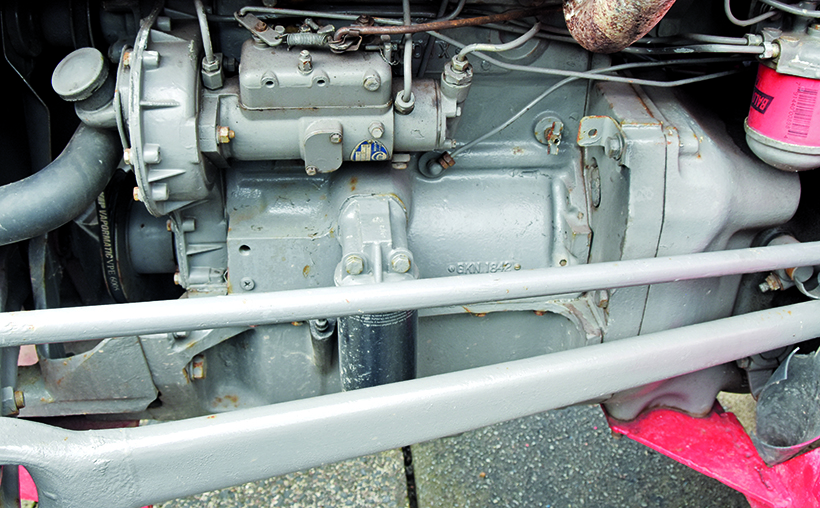
The superb Perkins AD3.152 was the iconic engine of its era.
“The tractor needed a full restoration, including a complete engine rebuild and new tinwork. The rebuild was carried out by Kilmarnock Engine Services, and we did the rest of the work ourselves. I also managed to get hold of a Duncan cab, which has also been given a makeover.
“Duncan cabs were made in Aberdeen and are sought after by Scottish enthusiasts. The company is still going strong, although the firm stopped making cabs a few years ago. Fortunately, it still runs a service providing spare parts. I’m a member of the Ayrshire Vintage Tractor Machinery Club (AVTMC), and like to go on road runs. The cab has been a big help protecting me from the weather, as we get our fair share of rain on the west coast.”

Like all 100 Series tractors, the MF 135’s instruments were thoughtfully laid out.
Desirable implement
Ross also has a Ferguson fertiliser spinner, which is a very desirable accessory. “We acquired the spinner in 2013 from fellow Ferguson Club member, Kevin Britton, who lives in New Cumnock,” he said. “The fertiliser spreader that is currently on the MF 135 was specifically made for the TE-20, as part of the Ferguson System. The spinner is still in its original condition, apart from a new spinning disc. I’ve always been keen on showing my tractors attached to an implement, and the combination seems to work well.”
No collection would be complete without a grey Fergie, and Ross’s particular tractor is a 1947 model TE-A20. “The tractor is a local machine, from just up the road in Eglington, where the AVTMC used to hold its annual show,” he explained. “The Fergie was first registered for road use in 1952, and was in reasonable condition when I got it. The only refurbishment was two new front tyres, a new seat, front grille and a pair of mudguards. I also added a totally rebuilt Scottish Aviation cab.”
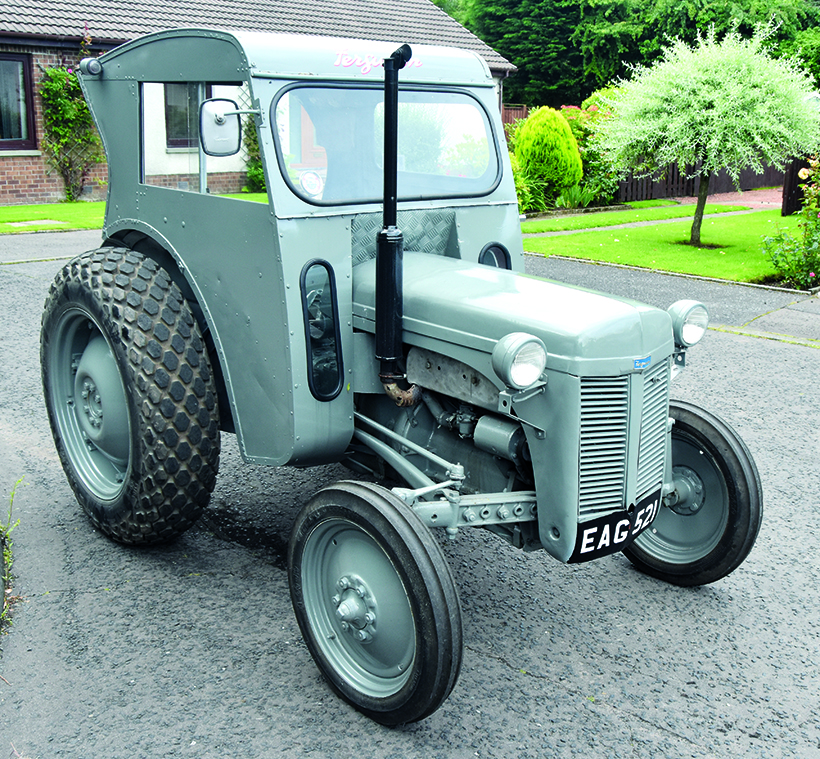
The model TE-A featured a new petrol engine, but some examples, like Ross’s tractor, were converted to run on cheaper vaporising oil.
“Back in 1947, when the tractor was new, it used petrol, before switching to TVO,” Ross explained. “Conversions were fairly common at the time, and were designed to keep costs down, as TVO was a lot cheaper than petrol. It’s also worth remembering that the UK was still suffering the austerities of wartime rationing.
“I’ve also got a TE-F20 diesel, which is currently awaiting restoration. Kevin Britton has already agreed to refurbish the tractor and, once the work is finished, I’ll switch the Scottish Aviation cab over to the diesel, and sell the TE-A20.”

Most Scottish Aviation Ltd cabs ended up on the TE-20, and were welcomed by drivers, especially during the winter months.
Scottish Aviation Ltd
Scottish Aviation Ltd was a Scottish aircraft manufacturer, based at Prestwick airport, close to Ross’s home. The organisation was originally set up as a flying school, but started taking on maintenance work in 1938, in the run-up to the Second World War.
During the war, the company was involved in refitting aircraft for operational duties. This included maintenance and conversion of the American Consolidated Liberator bomber, to serve as a specialist aircraft with RAF Coastal Command. Equipped to carry depth charges, the bomber would play an important role in flying long patrols and stalking German U-boats in the Atlantic.
The company’s old factory still exists, and has an interesting history. It was formerly the ‘Palace of Engineering’ at the 1938 Empire Exhibition in Bellahouston Park, Glasgow. The building was subsequently dismantled from that site and re-erected at Prestwick.
Necessary diversification
After the war, the company continued to be involved in aircraft production. During the 1950s, Scottish Aviation Ltd was looking to diversify from aircraft manufacturing, which was now in steady decline. Management was keen to make use of the company’s existing capacity, and started to build tractor cabs. Tractor manufacturers at the time weren’t obliged to supply cabs as standard equipment, and several firms offered them as an accessory. The cabs were supplied either directly to the customer, or via a tractor dealer. The dealer would then fit the cab as part of the overall sales package.
Early cabs were made using a light steel frame, with thin sheet steel cladding or canvas sides. Scottish Aviation Ltd was even reputed to have used left-over Supermarine Spitfire parts that were deemed surplus to requirements. The cabs were fitted to Ferguson tractors and the Fordson Major E27N.
By the early 1970s, tractor manufacturers had to provide roll-over protection cabs as standard fitments on all new machines, to comply with the latest Health & Safety regulations. Although a few independent firms continued to supply cabs directly to the manufacturer, other companies, like Scottish Aviation Ltd, called it a day.
In 1977, Scottish Aviation Ltd merged with the British Aircraft Corporation, Hawker Siddeley Aviation and Hawker Siddeley Dynamics, to form British Aerospace. Most of the company’s assets now belong to Spirit AeroSystems.
Fordson E1A Major
Ross also owns a Fordson E1A Major, similar to the tractor that was working on the farm when he was a boy. “I always wanted to get one of these tractors, for sentimental reasons,” he said. “The tractor was originally new in 1954, to William Muirhead from Balgray Farm, by the village of Torranyard. The tractor was actually delivered to the new owner by my old friend, George Wisener, who was working for the Dunlop Motor Company in Kilmarnock.

The Fordson E1A, introduced in 1951, was the second incarnation of the Major. The dark blue livery of the earlier E27N was replaced by a new, curvier design finished in Empire Blue.
“The Fordson was not only used on the farm, but doubled up as the Muirhead family’s regular transport. This was quite common back then, as few people could afford cars. The tractor was regularly seen at Kilmarnock Cattle Market on most Fridays.
“The tractor was eventually moved on, and I acquired it from a farm at Mauchline, in 2017. I took it on a local club road run to check its performance, and there were obviously a few issues with the engine. Fortunately, George Wisener agreed to help me out, and the tractor ended up getting a complete engine rebuild. George knows his stuff and has restored a lot of his own tractors. As a final part of the restoration, we fitted another Duncan cab.”
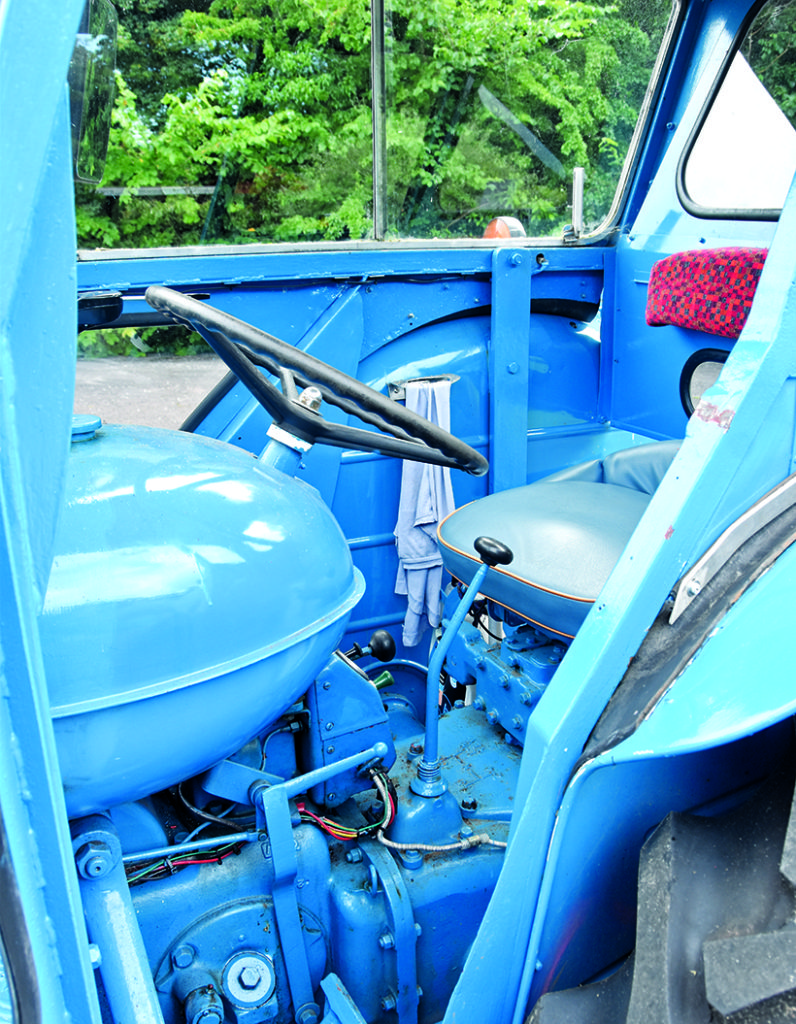
In the 1950s, farmworkers were expected to work in all weathers, so a cab was a very welcome addition.
Suitable transport
Unlike cars and commercial vehicles, getting tractors to rallies is not a straightforward process, and a lot of enthusiasts have taken to commandeering an old lorry. “I use a Ford Iveco 75E15, that was originally new to Durham Council,” Ross explained. “As far as I’m aware, the lorry was mainly used to transport mini excavators. We acquired it from a dealer based in Liverpool, back in 2012. The lorry obviously adds to the expense, but my wife Margaret likes to come to shows and it suits us fine.”
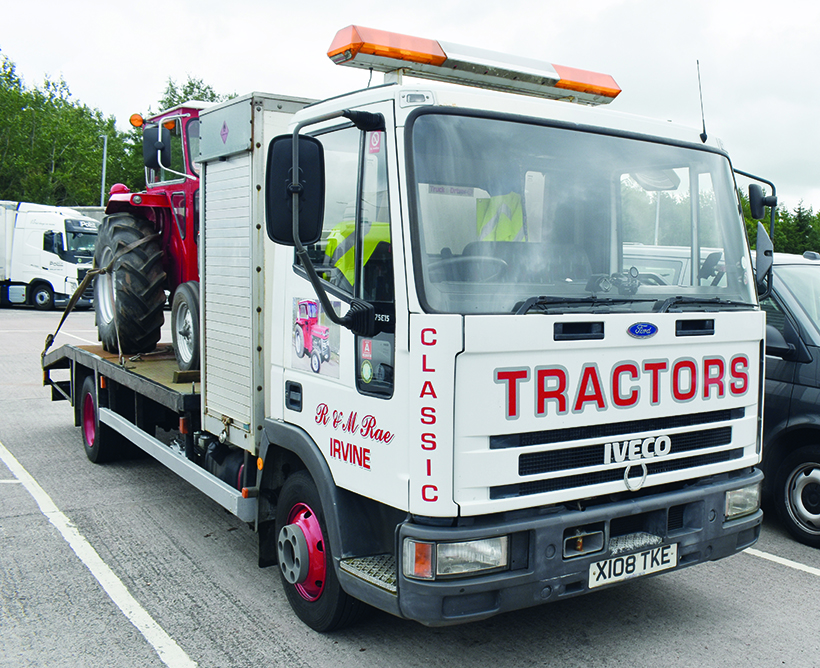
Ross uses his Iveco lorry to transport his tractors to events; a growing trend with many enthusiasts. (Pic: Ross Rae)
Ross likes to attend as many shows as possible during the summer months. This has obviously been affected by the lockdown, but he hopes that things might return to normal in 2021. “Things are still uncertain at the moment, but they managed to arrange a local road run recently for old commercial vehicles,” he said. “It was good to get out in the Iveco, with the MF 135 on the back. It takes a lot of time, money and effort to organise rallies, but it will be nice to enjoy our tractors again and meet up with some old friends.”
For a money-saving subscription to Tractor & Farming Heritage magazine, simply click here



